Business Profile: D&J Precision Machine
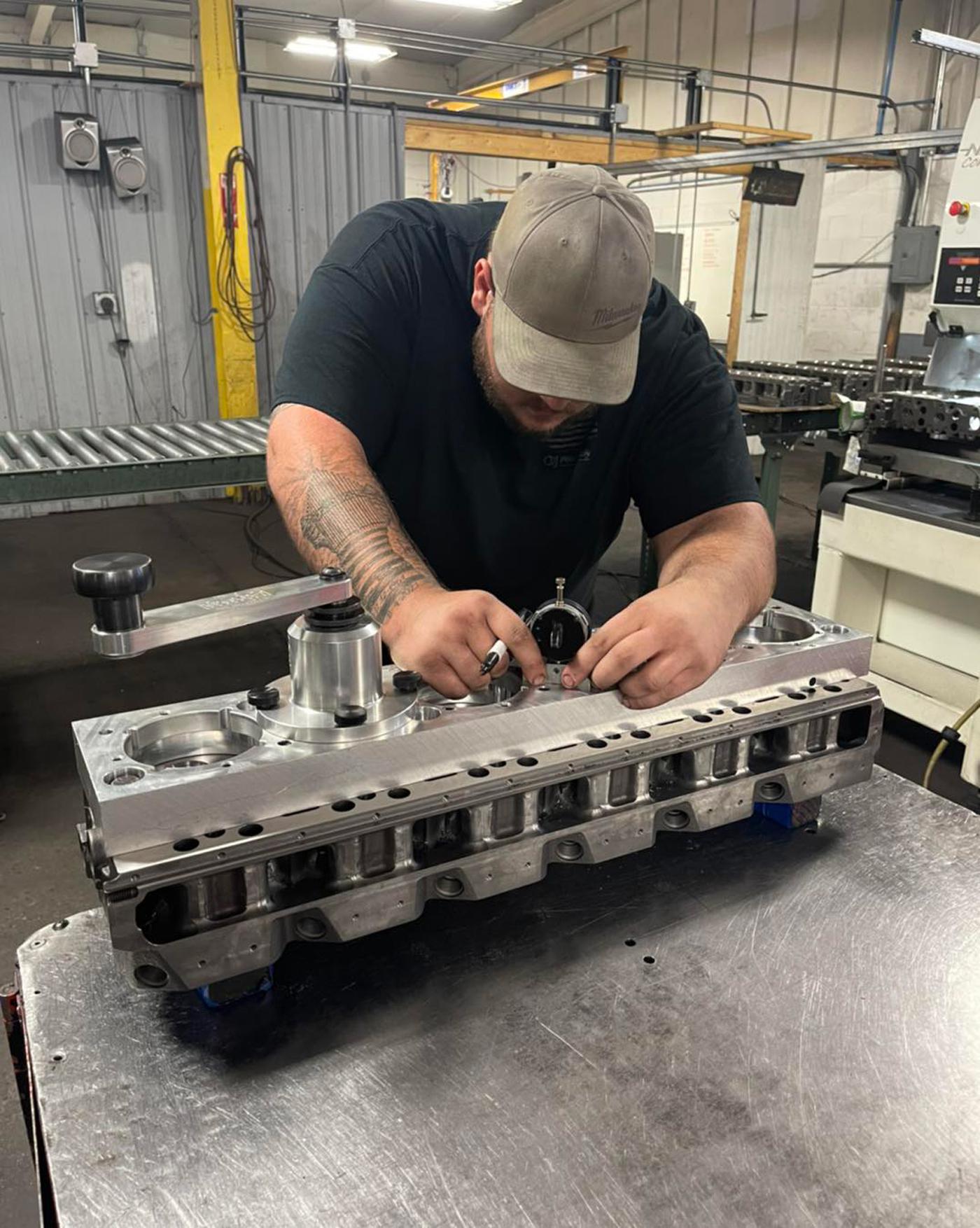
What began as a side project in a corner of a friend’s shop has evolved into a fixture of the high-performance Cummins diesel segment with 20 employees and a 24,000-square-foot facility.
Over the past decade, D&J Precision Machine has gone from a one-off build for a friend to a high-performance Cummins diesel outfit that ships out one engine and three cylinder heads per day. But as CEO Drew Pumphrey explained, the company almost stalled out at the conceptual phase.
“At that time, the plan was to move to Utah and run Wendy’s stores for my dad. I had worked for a company called Enterprise Engine Performance for a few years and had eventually gotten to the point where I was running day-to-day operations there. In 2012, during the transitional phase between Enterprise and the expected move to Utah, I went to work for a directional boring company, and the owner was also a truck pulling customer. He asked me to build an engine for him, but since I’d left Enterprise Engines, I didn’t have a place to do that.”
The owner offered a corner of the company’s shop for the build so that Pumphrey could work on what he assumed would be a one-off project. But soon after its completion, others began asking Pumphrey if he could build engines for them as well.
“I didn’t have any money at the time, and basically no equipment,” he said. “The owner of that directional boring company actually loaned me $10,000 so I could build the next engine after his. I paid him back out of the proceeds from that engine build, and D&J Precision Machine basically grew out of that.”
For about a year, Pumphrey worked for the directional boring company and fit in engine builds when he could. Then, in 2013, he moved his operation into a 2,400-square-foot facility in Zanesville, Ohio. “That was the first time we were truly off on our own,” he said. “And that’s when I hired my first employee.”
D&J Precision Machine moved into a new 5,000-square-foot shop the following year, but thanks to the company’s rapid development, it quickly outgrew that facility as well. By 2016, the company had moved into its current 26,000-square-foot Cambridge, Ohio-based facility.
Finding A Niche
D&J Precision Machine works specifically on high-performance Cummins diesel engine builds, many of which are used in diesel drag racing series as well as pulling competitions. Pumphrey said that his company’s focus on this family of engines can ultimately be traced back to his teenage years.
“In high school I got a diesel Dodge pickup truck and started doing some sled pulling. Working on that truck is what led me to the job at Enterprise Engines. D&J’s niche has always been the B-Series platform—the Dodge Cummins stuff. We haven’t really branched out of that because it has always kept us busy.”
He said that by early 2020 the company was rarely working on anything under 1,000 horsepower, but the pandemic lockdowns convinced him to re-evaluate things.
“Up to that point, we just didn’t have the time to get into anything below that. But things slowed down when COVID-19 hit. While that dip ended up really only lasting about a month or so, it made us look at branching out a bit, so we added more of the lower horsepower stuff and stock-style remanufacturing to the mix as well. Going forward, we’d like to turn that kind of work into about 50% of what we do because it’s more sustainable, and more recession-proof. We didn’t want to slow the performance stuff down, though. We wanted to build the company by adding more people and increasing our capacity so we could also take care of the everyday guy.”
Setting A Standard
One of the characteristics that sets D&J Precision Machine apart from most other diesel engine outfits is that almost everything that goes into its high-performance engine builds is manufactured in-house.
“We’re a machine shop as much as we’re an engine builder,” Pumphrey said. “We do all of our own block and cylinder head work, and we manufacture our own pistons, connecting rods, intake manifolds, valve covers, and everything that ties into that stuff. We also sell out the door to other engine builders as well as customers who’re doing their own engine builds.”
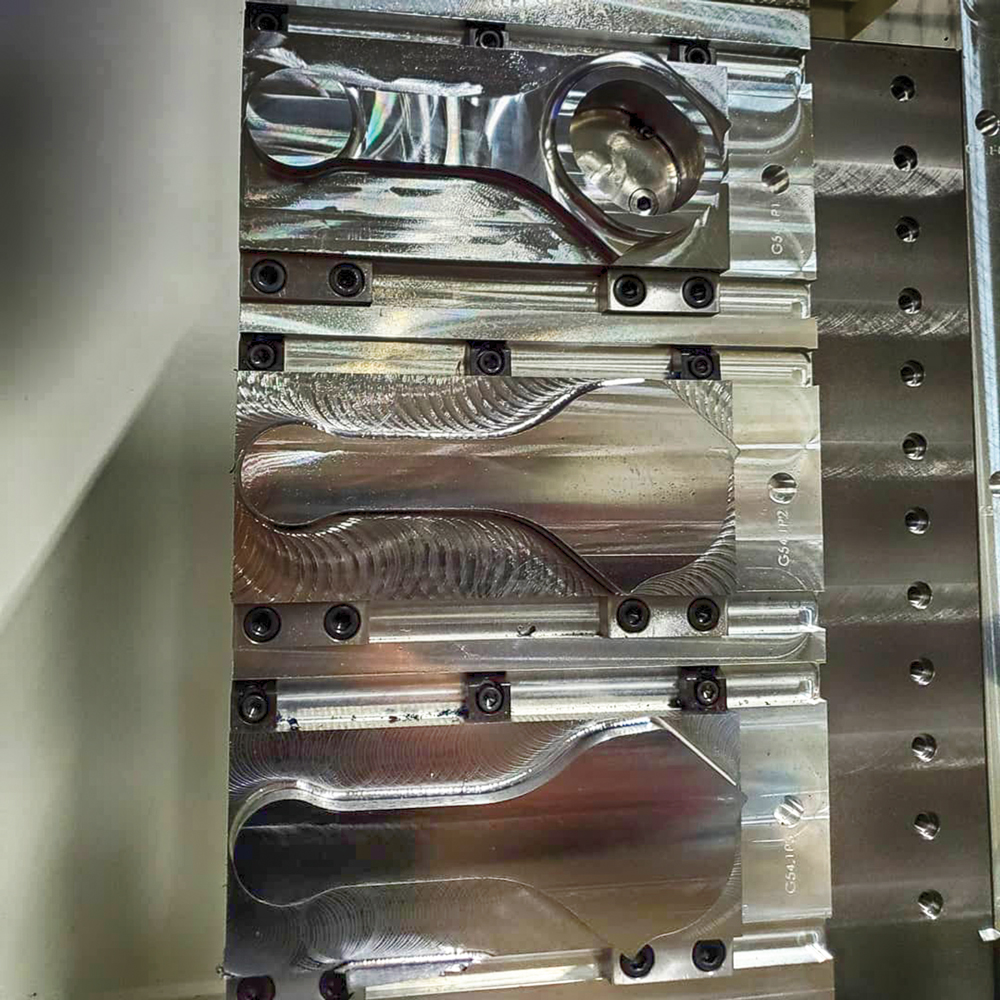
Pumphrey explained that he decided to bring a significant amount of the manufacturing in-house because he wanted more control over the quality of the components used in the engine builds. “We couldn’t get what we wanted. Even with connecting rods and pistons we kept having failures and other issues with the high-end stuff. We also had other people doing block work for us early on, and they were just unreliable. We knew we could solve these problems ourselves if we brought it in-house.”
D&J Precision Machine’s full-billet Cummins powerplants are capable of more than 3,500 hp and 4,000 lbs.-ft. of torque, a level of power that factory blocks simply can’t handle. “These engines are going into trucks in the Outlaw Diesel Super Series, along with some of the No Prep Kings events. And some are starting to play with Pro Mods. There’s going to be a couple of really, really good cars coming out in the next year. What we’ve always lacked in the diesel community is really good chassis. Some of our best customers have been running S10 Pro Mod chassis from the 1990s. But we’ve got a couple of guys who’ve built some stuff for this year that have the potential to run at the top of the Radial vs. the World classes.”
In For The Long Haul
The company currently has 20 employees working at the shop, which boasts specialized equipment that includes several vertical CNC machines for parts manufacturing and block work, a Rottler CNC cylinder hone for high-quality bore surface finishes, and an advanced seat-and-guide machine that allows them to do whatever profile they want for valve jobs. Cylinder head porting is done with a Centroid five-axis CNC machine, while a DMG Mori horizontal handles what Pumphrey describes as the grunt work. “It does a lot of billet valve covers and a lot of our billet connecting rods.” A SuperFlow Black Widow engine dynamometer is installed onsite as well.
While D&J Precision Machine is always looking for good people, Pumphrey said that it has put together a strong team in part by adopting a policy of internal promotion. “We’ve brought a lot of young folks in, and that’s worked really well for us. The guy running our cylinder head department is 20 years old, and he was originally hired as a part-time employee right out of high school. For us it’s about training these folks on the job. The guy assembling engines for us now started off cleaning parts in the core department. We try to work people upward by teaching them along the way and putting them in the best places where they fit. That’s been the most successful method for us.”
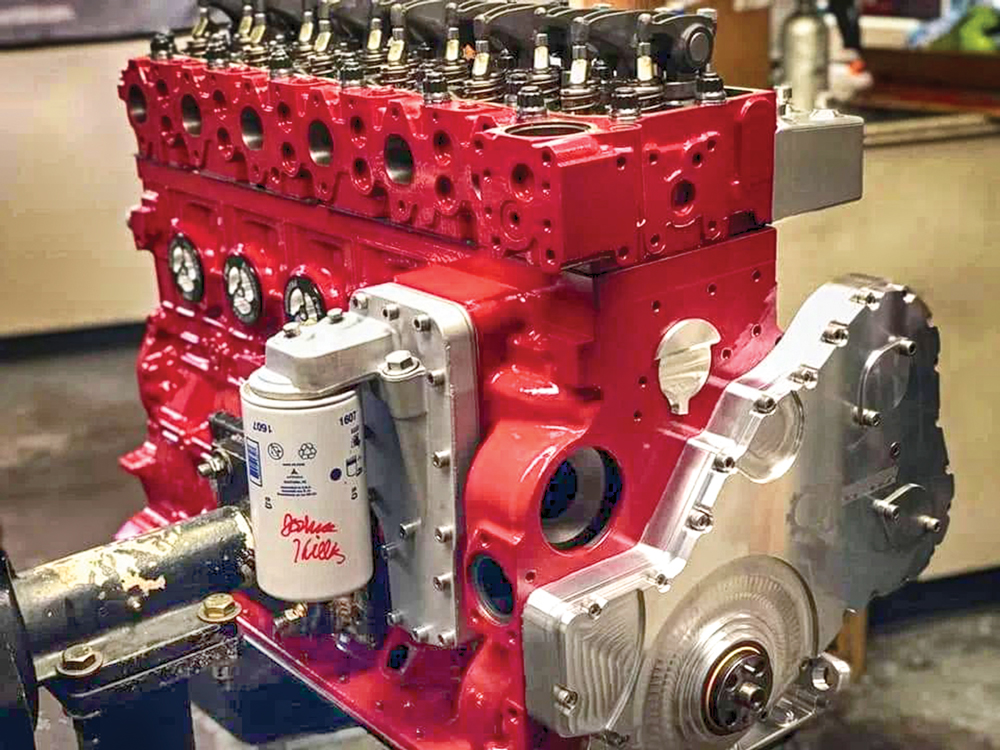
Considering the company’s current output, that tactic seems to be working. “Aside from engine builds, we do full long blocks, full fuel systems, and dyno-proven turbocharger setups,” he said. “And we do a lot of cylinder heads. We’re shipping out three cylinder heads and one engine every day when we’re on schedule.”
Pumphrey said that campaigning a D&J race truck isn’t a priority for the company right now, not only due to time constraints, but also because of some concerns he has about the dynamic it creates between shops and their customers.
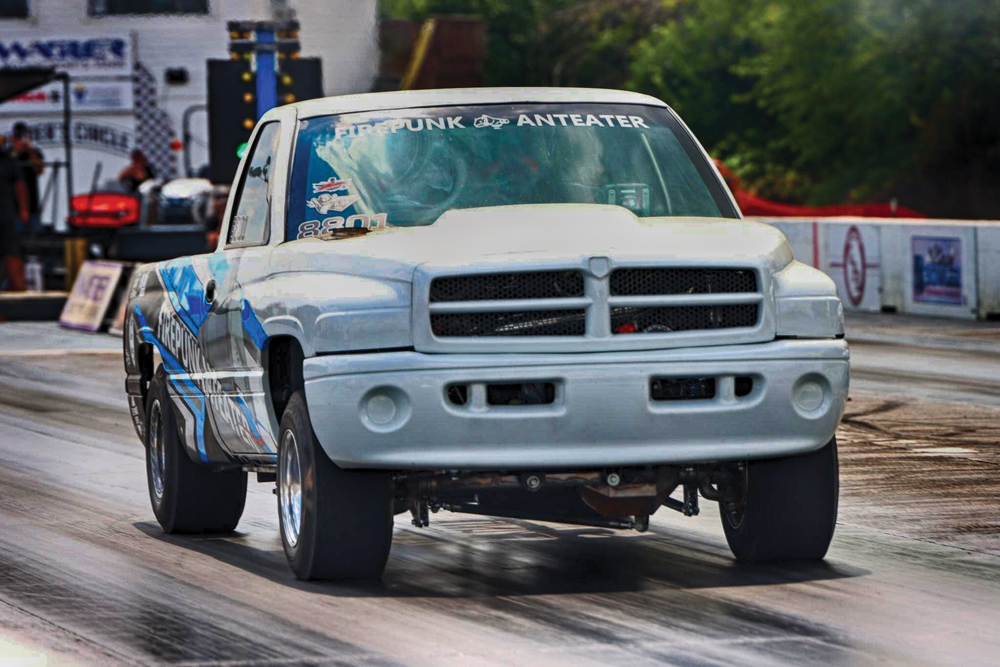
“I’ve seen a lot of shops who compete with their customers, and it seems like their customers are always in second place and the shop is in first,” he observed. “I never wanted to be that guy. I want to make sure whoever wants to chase it can do that. Our customers keep us at the forefront of what’s going on. When someone has a failure, we can identify it right away and address those problems. We have several customers who’re always pushing the envelope. And every time we identify a failure point, we solve the problem by making improvements. That’s really how the development of all of our products began.”
From an organization standpoint, Pumphrey said a properly built-out management system is crucial to the long-term success of a company like D&J Precision Machine.
“For a while, we didn’t have enough management,” he explained. “We just didn’t realize how much management we needed in order to keep things moving well. Before we figured that out, we would constantly get engines to the clean room and discover that they were missing parts, or things weren’t lined up for them. It’s a bigger challenge than it seems; when you’re shipping out one engine a day, you have to have everything in order when it hits the clean room so it doesn’t get stalled in there because something’s missing.”
Last year the company incorporated enterprise resource planning software to help with inventory management and workflow optimization, a move Pumphrey said has been a tremendous help with inter-office communication. “Now everyone knows what they need to do and how to stay on schedule. Scheduling is huge. For a long time, we didn’t operate on a schedule, and sticking to a schedule is the hardest part. We had to learn how to tell customers ‘No’ because you can’t just jump on their stuff when they have to have it. They have to get in line.”
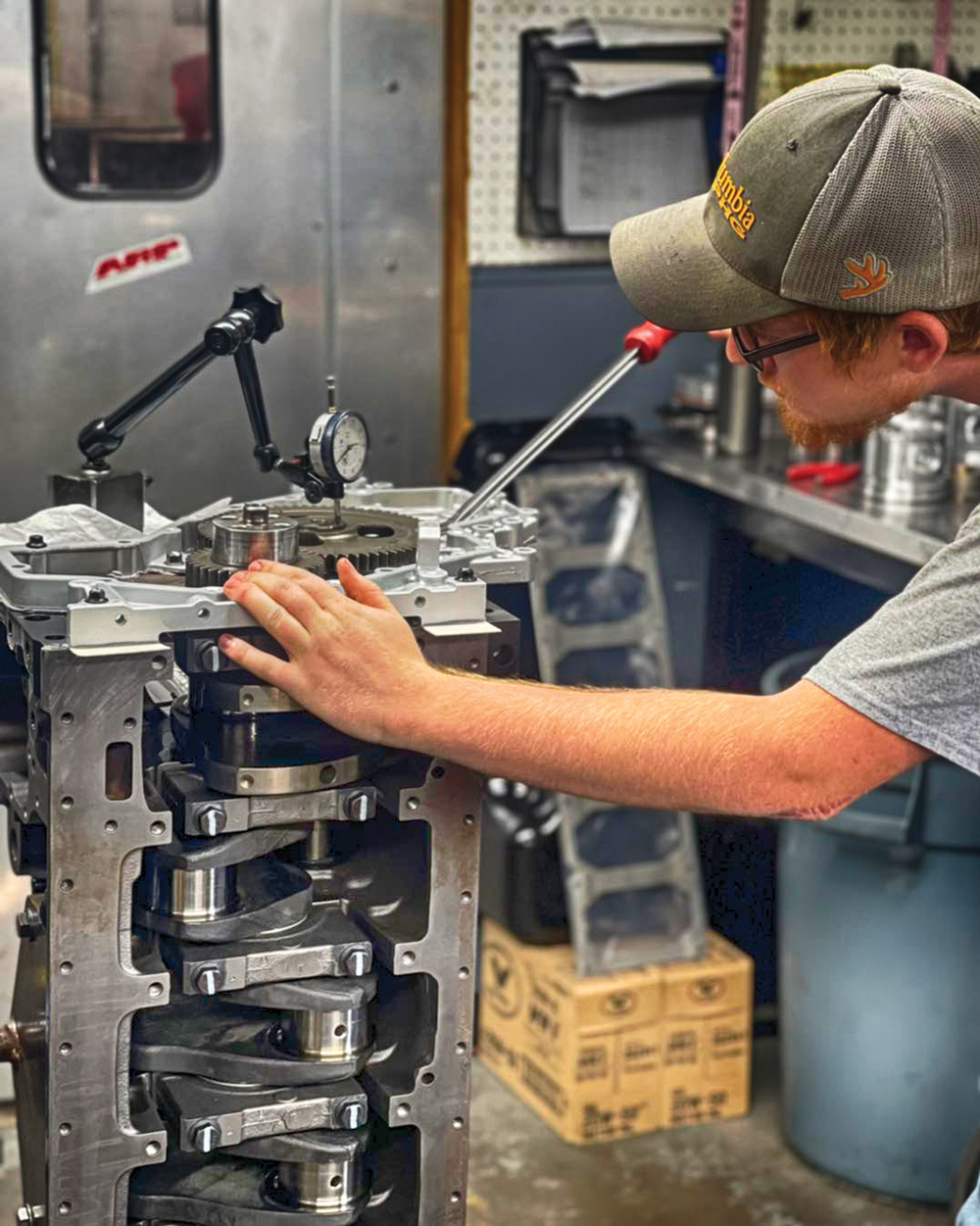
Focusing on inventory management also put D&J Precision Machine in a strong position once demand came roaring back in the second half of 2020. “We invested heavily in inventory right as COVID hit. We basically looked ahead six months with our top four vendors and purchased as much as we possibly could,” Pumphrey noted. “We actually had to finance that effort, but it gave us an advantage because we had parts on the shelf when a lot of other people didn’t. That allowed us to move forward when others were completely stuck. What was six months’ worth of product back then is about two months’ worth today.”
That kind of forward thinking is what brings racers like Patrick Puskarich to D&J Precision Machine. Puskarich currently campaigns a 1997 Dodge 3/4-ton pickup with a D&J 6.4-liter Predator long block in 2.6 Smooth Bore-class truck pulling competitions. Puskarich originally got his start in the discipline with gas-powered trucks, so when he decided to make the switch to the diesel side about six years ago, he knew he was going to need an engine builder who really understood how to put together a bulletproof Cummins combination.
“We’re also located in eastern Ohio, and a friend had suggested that we track Drew down,” Puskarich explained. “I really liked that he was doing his own thing—designing his own parts and coming up with his own solutions. Working with him has definitely improved our durability. If Drew doesn’t like the way something is made, he makes a better one.”
 MEMBERSHIP LOGIN
MEMBERSHIP LOGIN JOIN PRI
JOIN PRI


